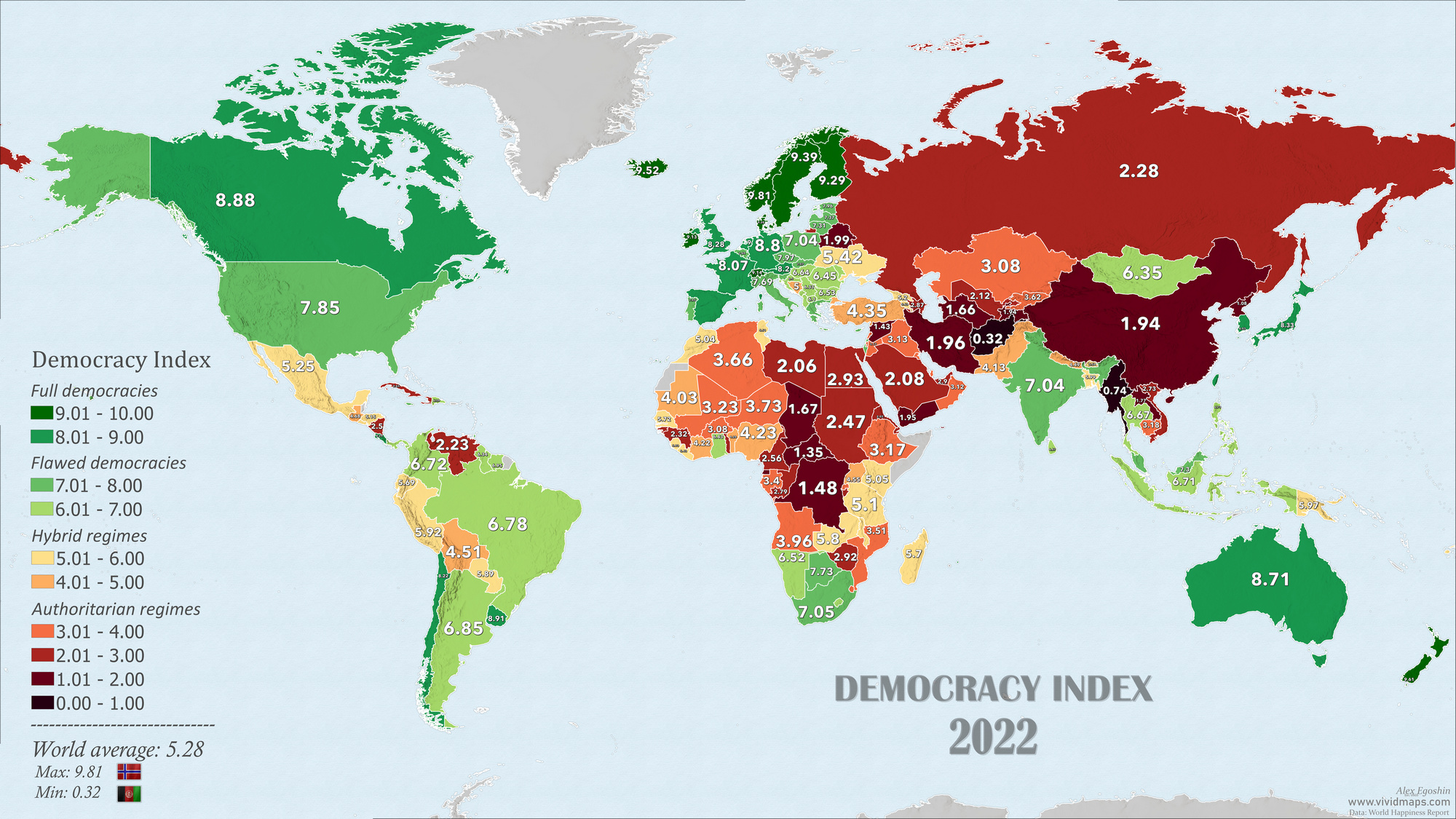Europe on the eve of the French Revolution
Europe on the eve of the French Revolution in the late 18th century was a complex and diverse continent, marked by significant social, economic, and political changes.
At the time, Europe was dominated by monarchies, which were absolute or limited in power, and had significant control over the lives of their subjects. The Enlightenment had influenced many people, leading to a growing desire for political and social change and for greater individual liberties.
The French monarchy, in particular, was facing significant challenges, including mounting debt and discontent among the people, who were increasingly impoverished and frustrated by their lack of political power. The monarchy was also grappling with the impact of the American Revolution, which had inspired many people with its ideas of liberty and equality.
Meanwhile, in other parts of Europe, significant social and economic changes were underway. The Industrial Revolution was transforming the way people worked and lived, leading to the growth of urban centers and the rise of a new working class. The emerging middle class was becoming increasingly influential and politically engaged, while the peasantry remained largely excluded from political power.
In many parts of Europe, tensions were rising, and there was a growing sense of dissatisfaction with the status quo. The French Revolution would ultimately serve as a catalyst for significant political and social changes across the continent, inspiring similar movements and uprisings in other countries.
The maps below illustrate what Europe looked like on the eve of the French Revolution.

On the eve of the French Revolution in the late 18th century, the term “superpower” did not exist as it does today. However, there were several European countries that were major powers and had significant political, economic, and military influence both within Europe and beyond. These countries were:
- Great Britain: Great Britain was the world’s leading naval power and controlled a vast empire that included territories in North America, Africa, and India. It also had a strong economy based on trade and industry.
- France: France was one of the most powerful countries in Europe and had a significant cultural and intellectual influence. It also had a large army and navy and was a major colonial power in North America, Africa, and Asia.
- Spain: Spain was another major colonial power, with territories in the Americas, Asia, and Africa. It also had a large navy and a significant cultural influence.
- Austria: Austria was a major European power and was one of the most important players in the Holy Roman Empire. It had a large army and controlled significant territories in Central Europe.
- Prussia: Prussia was a rising power in Europe and had a powerful army that was renowned for its discipline and efficiency. It was a significant player in the politics of Central Europe.
These countries, along with others such as Russia and the Ottoman Empire, were the dominant powers in Europe on the eve of the French Revolution. However, the Revolution and the subsequent Napoleonic Wars would bring about significant changes to the political order of Europe, ultimately leading to the emergence of new superpowers such as Germany and the United States in the 19th and 20th centuries.

The map below shows the population of European countries on the eve of the French Revolution.

On the eve of the French Revolution, Germany was a collection of hundreds of small, independent states and territories that were politically and economically fragmented. The Holy Roman Empire, which had been the dominant political institution in the region since the Middle Ages, was in decline and had little power to control the various German states.
Socially, Germany was divided into a complex hierarchy of nobility, bourgeoisie, and peasantry. The nobility held significant power and wealth, while the peasantry was largely rural and struggled with poverty and subsistence farming. The bourgeoisie was emerging as a new class of wealthy merchants, professionals, and intellectuals, but had limited political power.
Culturally, Germany was experiencing a period of intellectual and artistic flourishing known as the Enlightenment. Many German intellectuals were influenced by the ideas of the French philosophes and were advocating for political and social reforms, as well as artistic and literary experimentation.
Religiously, Germany was predominantly Protestant in the north and Catholic in the south, with tensions and occasional conflicts between the two groups.
Overall, Germany was a politically fragmented and socially complex region on the eve of the French Revolution, with significant cultural and intellectual developments underway. The Revolution and the Napoleonic Wars would have a significant impact on Germany, ultimately leading to the emergence of a unified German state in the 19th century.

The French Revolution had significant and far-reaching consequences for Europe, both in the short term and over the long term. Here are some of the most important consequences:
- Spread of revolutionary ideas: The French Revolution spread revolutionary ideas of liberty, equality, and fraternity throughout Europe. It inspired many people to challenge the status quo and to demand greater political rights and social equality.
- Rise of nationalism: The Revolution helped to fuel the rise of nationalism in Europe, as people began to identify more strongly with their own national identities and cultures.
- Wars of Revolution: The French Revolutionary Wars, which began in 1792 and lasted for over 20 years, had a significant impact on Europe. They disrupted the existing political order and led to the rise of Napoleon Bonaparte, who became a major European power and sought to spread revolutionary ideals throughout the continent.
- Changes in political structure: The French Revolution brought about significant changes in the political structure of Europe. Monarchies were overthrown, and republics and democracies were established in their place.
- Social and economic changes: The Revolution also brought about significant social and economic changes, particularly in France. Feudalism was abolished, and land was redistributed to the people. The Napoleonic Code established legal equality and abolished feudal privileges.
- The spread of liberalism and the rise of conservatism: The ideas of liberalism, which were central to the Revolution, spread throughout Europe, leading to the rise of political movements advocating for individual liberties and limited government. However, the Revolution also sparked a conservative backlash, as some people sought to restore the old order and resist revolutionary change.
Overall, the French Revolution had a profound and lasting impact on Europe, and its legacy can still be felt today.








